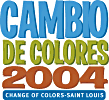Panel:
Panel: Recruitment and Retention Issues in Higher
Education
A report contributed by 
Theme: Education
Moderator: Hortencia Kayser, Professor and Associate
Dean, Saint Louis University
Presenters:
- Lorenzo Covarrubias, SLU: Student Demographics in the State
of Missouri
- Ana Pizarro, MSW Catholic Community
Services, International: The High School Senior
and Preparing for College
- Ismael Batancourt,
International Programs, SLU: Issues in Undergraduate
Education Recruitment & Retention
- Hortencia Kayser,
SLU. Issues for Graduate School Recruitment & Retention
The concept of going to college is different for a white student than
it is for a Latino student in the United
States. While white students, for
the most part, see college as a natural continuation
of their education, Latino students face a myriad of challenges on
the road to higher education.
The education breakout session �Recruitment and Retention Issues in
Higher Education� probed issues facing prospective Latino college students
and
discussed ways of resolving them.
The overarching theme raised by HortenciaKayser, a professor and associate
dean at Saint Louis University,
was the academic community to respect and reflect Latino culture without
creating animosity among the diverse groups.
Specifically, the problems discussed were how to help high schoolers
thinking about college, how to help Latino students enter college and
keep them there, and how to recruit Latinos into graduate school.
To give overall support to Latinos in college, Kayser�s suggestions
involved participation from both the students and the administration.
On one side, the schools should start reflecting the Latino growth
in Missouri and they
should respect the local histories of that growing population. On the
other side, there should be a push to create more Latino student groups
and a move to have more Latino research and teaching.
Ana Pizarro, from MSW Catholic Community Services International, presented
information about high school students looking towards college. Lack
of information about college was the main issue she discussed, but
she made mention of other obstacles, such as the idea that a high school
diploma is enough.
�Many kids don�t know where to go to get information,� Pizarro said. �They
expected guidance counselors to help, but they didn�t get it.�
Another difficulty with college admissions is the application itself.
Bogged down with difficult language, it �is confusing and asks very
personal questions, which can be scary,� Pizarro said.
Some Latino students, Pizarro explained, sometimes do not see past
receiving a high school diploma. This type of thinking leads them to
not continue on to college.
�Some think college is great, but getting that high school diploma
is a huge achievement,� Pizarro said. �Many come from families where
most of them haven�t even graduated from grade school.�
Money, language, family and honesty are the four bases IsmaelBatancourt,
who works with international programs at SLU, touched on in his discussion
of undergraduate recruitment and retention.
While universities continue to increase tuition, the average income
of Latino families cannot keep up. Those increases, paired with the
fact that many Latino parents have low-paying jobs, make funding college
very difficult for families.
The language barrier is even more difficult for the parents than for
the students because most of the information they receive is in English.
Even though many parents have a working knowledge of English, forms
such as the FAFSA use complicated language and ask detailed questions
about personal finances that might seem very invasive to some parents.
Batancourt offered the solution of having more Spanish speakers in
university offices so they can better help confused parents.
Batancourt stressed the importance of family in the college application
process. He explained that 85 percent of the time, recruiters speak
with the family first and that the choice is made not by the student
alone, but by the family as a whole.
�Hispanic families are close-knit and group-oriented,� Batancourt
said. �The family will make the decision together.�
Honesty, in Batancourt�s opinion, is one of the most important points
in the recruitment process. He stressed honesty in explaining the number
of other Latino students on campus, having prospective students talk
with current students in order to see what college life is really like,
and, he joked, tell them how cold the weather can really get. Plus,
Batancourt added, if you honestly portray college life, it will generate
word of mouth and possibly bring in more Latinos. Making the leap from
undergraduate to graduate, Kayser discussed ways in which to get Latinos
more involved in graduate studies.
Kayser placed an emphasis on finding a good graduate program that
fits well with the Latino student.
�The program needs to feel right,� Kayser said. �If not, the work
will be lots harder.�
In order to make Latino students feel more comfortable with their
program, Keyser made a list of suggestions that spanned from having
more direct contact with an advisor to help students through their
studies, to having social events that promote diversity and unity among
all the students.
Holding with the Cambio de Colores theme of confronting problems facing Missouri�s
Latino population, this session served as an eye-opener, showing that
changes need to be made to better accommodate Latinos in the world
of higher education.
Day 1: Wednesday, March 10th, 2004.
Reporter: Diego Sorbara
|
